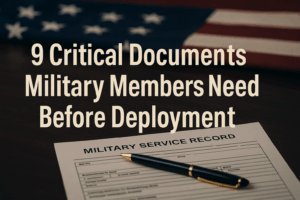
Dealing with the loss of a loved one is one of the most difficult experiences anyone can go through. On top of the emotional strain, the financial burden of planning a funeral can often be overwhelming. Funerals, burial or cremation services, and memorials can add up to thousands of dollars—costs that many families are unprepared for. Fortunately, funeral fundraisers offer a compassionate and effective way to gather financial support from family, friends, and the community.
If you find yourself in need of raising money for a funeral, knowing how to organize and execute a successful fundraiser can ease the financial pressure. This guide will walk you through the process of starting a funeral fundraiser, providing valuable tips and insights to help you gather support during a difficult time.
1. Understanding the Importance of Funeral Fundraisers
Funerals are more than just a gathering; they are a time for loved ones to come together, grieve, and celebrate a life well-lived. However, the costs associated with funeral services—including the casket, burial, cremation, transportation, and memorial services—can create unexpected financial strain for many families.
A funeral fundraiser is an opportunity to allow friends, family, and the community to contribute financially to help offset these expenses. Fundraisers can also allow people to show their support in a tangible way, which can help create a sense of community during a time of loss.
2. Choose the Right Fundraising Platform
Comprehensive Guide to Funeral Planning: Legal Documents You NeedThe first step in starting a funeral fundraiser is selecting the right platform. Several online platforms are specifically designed to help families raise funds for funerals and other expenses. Below are some popular crowdfunding (aff) platforms for funeral-related fundraisers:
- GoFundMe: One of the most popular crowdfunding platforms, GoFundMe allows you to set up a campaign easily and share it with others via social media and email. GoFundMe does not charge a platform fee for personal causes, but standard transaction fees do apply.
- Funeral Fund: A platform specifically designed for funeral-related fundraisers, Funeral Fund offers various tools to help you organize and promote your campaign. This platform can be a good choice if you prefer a service dedicated to funeral expenses.
- YouCaring: This platform specializes in compassionate crowdfunding and does not charge fees for funeral or medical-related campaigns, although transaction fees apply. It’s user-friendly and allows donors to leave messages of support.
- Facebook Fundraisers: Many families turn to Facebook for fundraising, as the platform allows you to reach friends and family quickly. Plus, it’s easy to share updates and encourage others to donate.
3. Set a Realistic Fundraising Goal
It’s essential to set a realistic and specific fundraising goal. Funeral costs can vary widely depending on the location, the type of service (traditional burial or cremation), and any additional expenses such as flowers, transportation, or obituary fees. On average, a funeral with burial costs between $7,000 and $10,000, while cremation services typically range from $3,000 to $5,000.
Your fundraising goal should reflect the actual expenses you need to cover. Be transparent about what the funds will go toward, whether it’s to pay for the casket, burial plot, cremation, transportation, or funeral home services. Being specific about how the money will be used will build trust with donors and encourage more contributions.
4. Write a Heartfelt Campaign Description
When setting up your fundraiser, the campaign description is your opportunity to share your story and connect emotionally with potential donors. Here are some tips to craft a heartfelt description:
- Be Honest and Transparent: Share the details of the loss and the financial challenges your family is facing. People are more likely to donate when they understand the need and feel a personal connection.
- Honor the Deceased: Share memories and stories about your loved one, focusing on the positive impact they had on others’ lives. Highlighting their character and what made them special can inspire generosity.
- Keep it Brief, Yet Impactful: While it’s important to provide details, try to keep your description concise. People are more likely to read and engage with a short, to-the-point campaign than a lengthy one.
- Include Photos: A picture of your loved one can create an emotional connection with potential donors. If possible, include one or two meaningful photos in your fundraiser to personalize your story.
5. Spread the Word Through Social Media and Email
One of the most effective ways to raise awareness about your funeral fundraiser is through social media. Platforms like Facebook, Twitter, and Instagram allow you to quickly reach friends, family, and even acquaintances who may want to contribute. Here are some tips for sharing your fundraiser:
- Use Multiple Platforms: Post about the fundraiser on Facebook, Twitter, Instagram, and even LinkedIn if appropriate. The more places you share the link, the more likely you are to reach potential donors.
- Encourage Others to Share: Ask friends and family to share the fundraiser on their social media pages. This can extend your reach beyond your immediate network and attract additional donors.
- Send Personal Emails: Social media is important, but don’t forget the power of a personal email. Write heartfelt, individual emails to close friends, family members, or groups that may want to help, explaining the situation and asking for their support.
- Use Hashtags: If you’re sharing on social media, use appropriate hashtags to increase visibility. Some common hashtags for funeral fundraisers include #funeralfundraiser, #inmemory, #celebrationoflife, and #supportgrievingfamilies.
6. Host a Fundraising Event or Memorial Service
In addition to online fundraising, you may want to consider hosting an in-person event or memorial service to raise funds. Events such as community dinners, car washes, or bake sales can be a meaningful way for people to come together, honor the deceased, and contribute financially. Some ideas include:
- Memorial Dinner: Organize a potluck-style dinner where friends and family can gather to celebrate the life of your loved one. Guests can make donations during the event.
- Silent Auction: Ask local businesses to donate goods or services that you can auction off during a memorial gathering or online event.
- Car Wash or Yard Sale: These simple fundraisers can be organized by a small group of friends or family members and can raise money in a short amount of time.
- Memory Jar or Fund Box: During a memorial service, you could set up a “memory jar” or fund box where attendees can leave financial contributions, personal messages, or memories about the deceased.
7. Thank Your Donors
After your fundraiser is complete, take the time to thank those who contributed. Expressing your gratitude can go a long way in showing appreciation and closing out the fundraiser in a meaningful way. Whether you send personal thank-you notes, emails, or post a public message on social media, be sure to acknowledge everyone’s generosity.
Additionally, provide updates on how the funds were used and how they helped cover funeral costs. Sharing how the donations directly impacted your family can leave a lasting positive impression.
A Compassionate Approach to Financial Support
Starting a funeral fundraiser can be an invaluable tool during a time of grief and financial hardship. By leveraging online platforms, sharing your story through social media, and asking for help, you can rally your community to support you during this challenging time. Remember that people are often eager to help but may not know how. Offering them the opportunity to contribute financially can make them feel included and helpful while giving you much-needed relief from financial stress.














